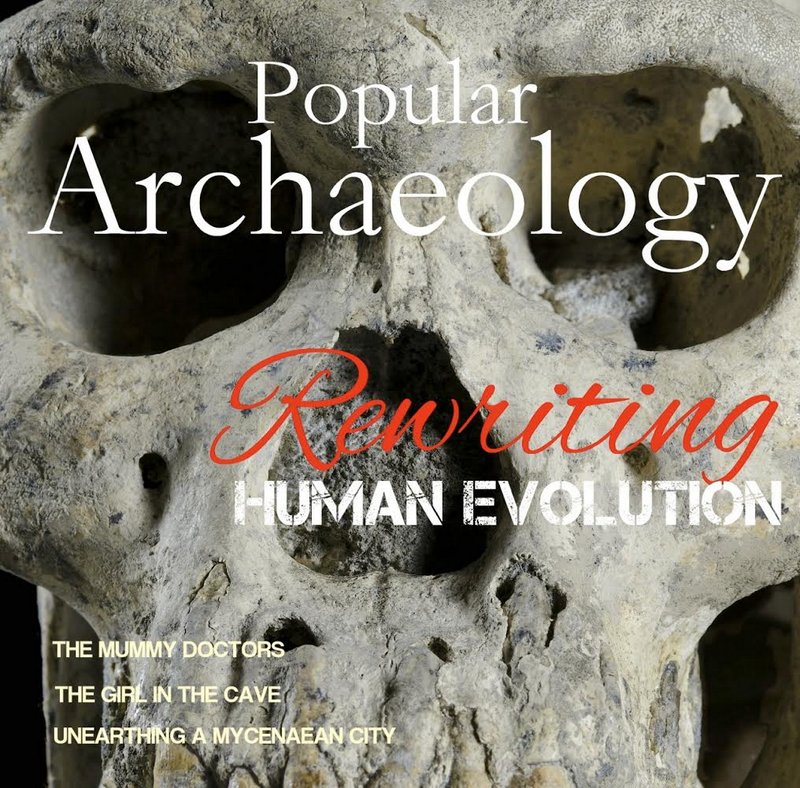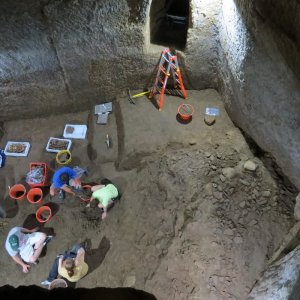
Archaeologists are scratching their heads about an underground pyramid-shaped structure they have been excavating beneath the historic medieval town of Orvieto in Italy. But it may not be a mystery forever. They hope to find answers as they continue to tease artifacts and architectural materials from the soil.
“We discovered it three summers ago and still have no idea what it is,” write Prof. David B. George of St. Anselm College and co-director Claudio Bizzarri of PAAO and colleagues about the site. “We do know what it is not. It is not a quarry; it’s walls are too well dressed. It is not a well or cistern; its walls have no evidence of hydraulic treatments.”*
Calling it the “cavitá” (‘hole’ or ‘hollow’ in Italian), or hypogeum, the archaeologists have thus far excavated about 15 meters down. They marked their third year at the site in 2014. By then they had uncovered significant amounts of what they classify as Gray and Black bucchero, commonware, and Red and Black Figure pottery remains. They have dated deposits to the middle to the end of the 6th century BCE.
“We know that the site was sealed toward the end of the 5th century BCE,” George, et al. continue. “It appears to have been a single event. Of great significance is the number of Etruscan language inscriptions that we have recovered – over a hundred and fifty. We are also finding an interesting array of architectural/decorative terra cotta.”*
______________________________
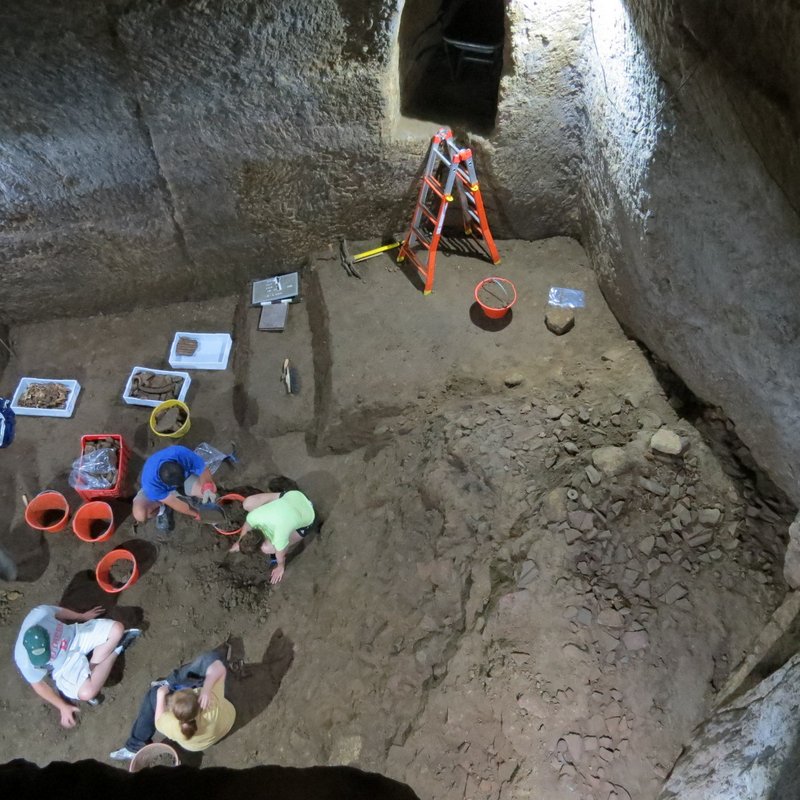 Overview of cavità, showing Etruscan tunnel and a locus with large quantities of pottery. Courtesy Daniel George, Jr.
Overview of cavità, showing Etruscan tunnel and a locus with large quantities of pottery. Courtesy Daniel George, Jr.
__________________________________________
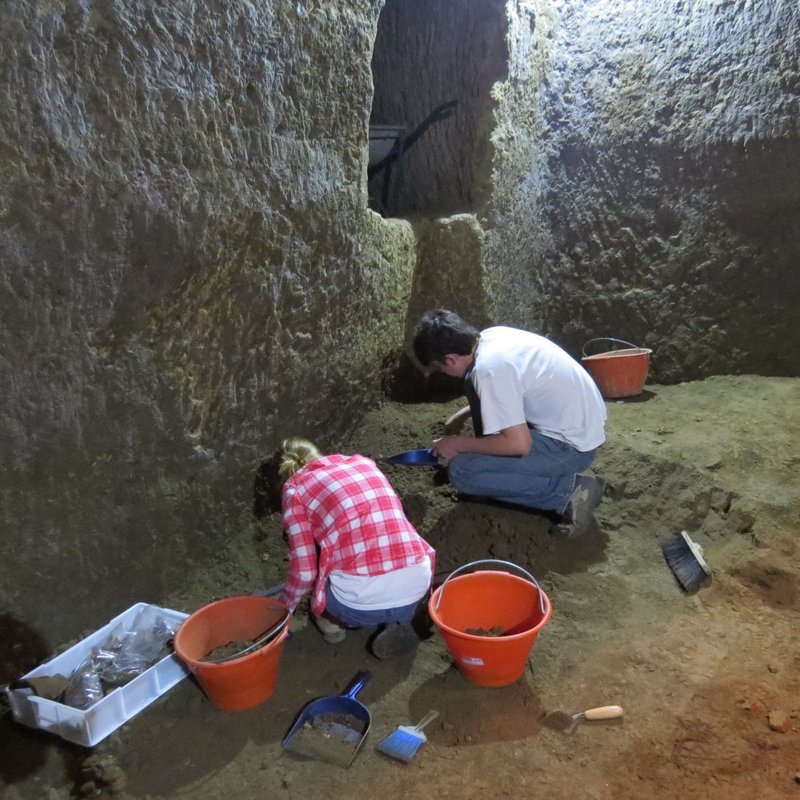 Excavation on the west wall of the hypogeum near the Etruscan tunnel that connects this pyramidal hypogeum (Room A) with an adjacent one (Room B). Courtesy Daniel George, Jr.
Excavation on the west wall of the hypogeum near the Etruscan tunnel that connects this pyramidal hypogeum (Room A) with an adjacent one (Room B). Courtesy Daniel George, Jr.
_________________________________________
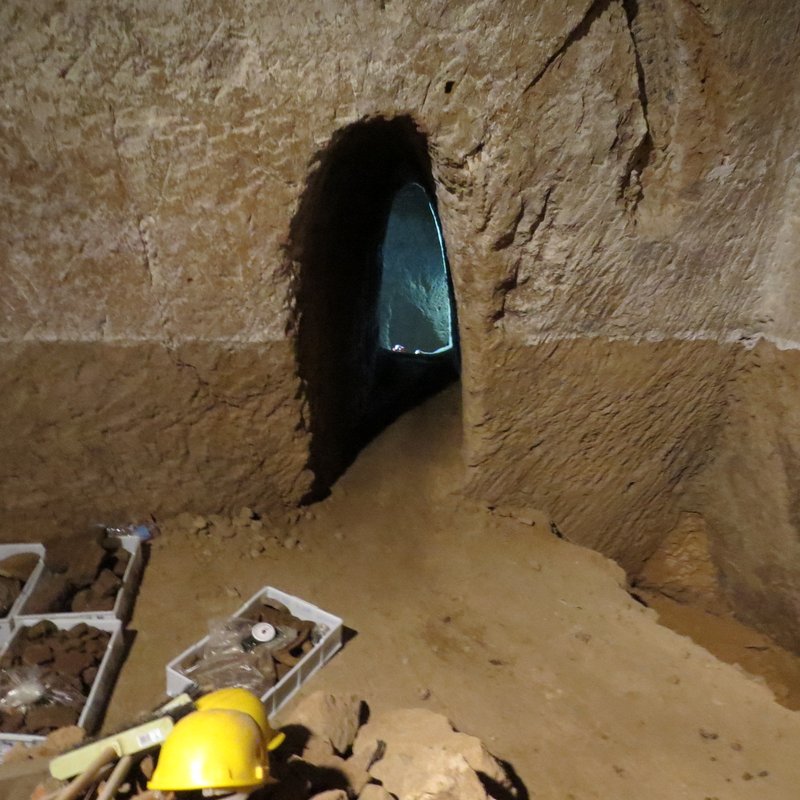 Looking from Room B through the Etruscan tunnel into Room A. Courtesy Daniel George, Jr.
Looking from Room B through the Etruscan tunnel into Room A. Courtesy Daniel George, Jr.
_________________________________________
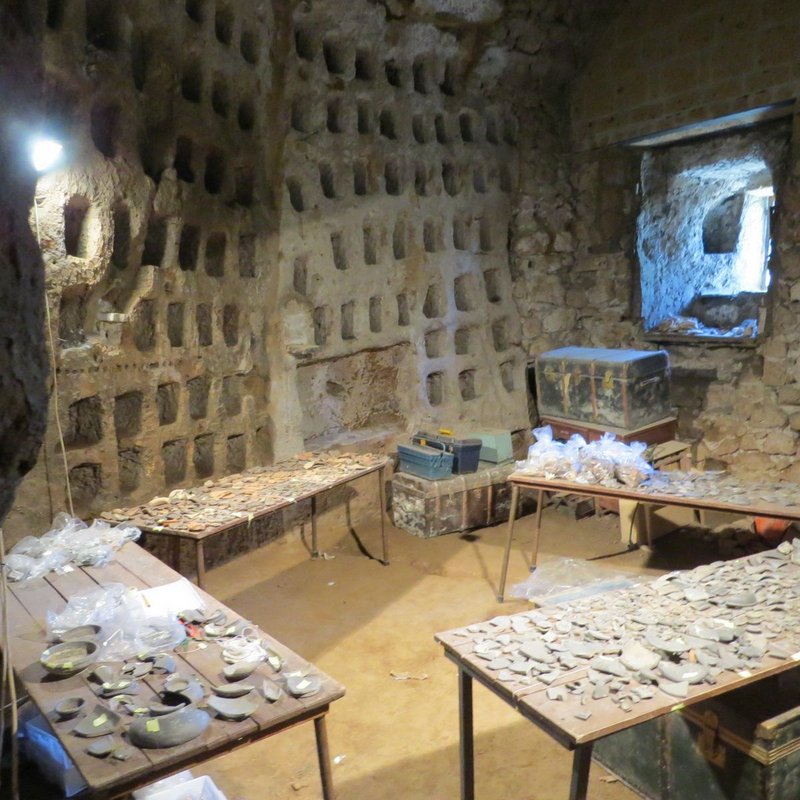 Above and below: The medieval columbarium – a place for raising pigeons – in the cavità used as a lab to sort bucchero. Courtesy Daniel George, Jr.
Above and below: The medieval columbarium – a place for raising pigeons – in the cavità used as a lab to sort bucchero. Courtesy Daniel George, Jr.
_________________________________________
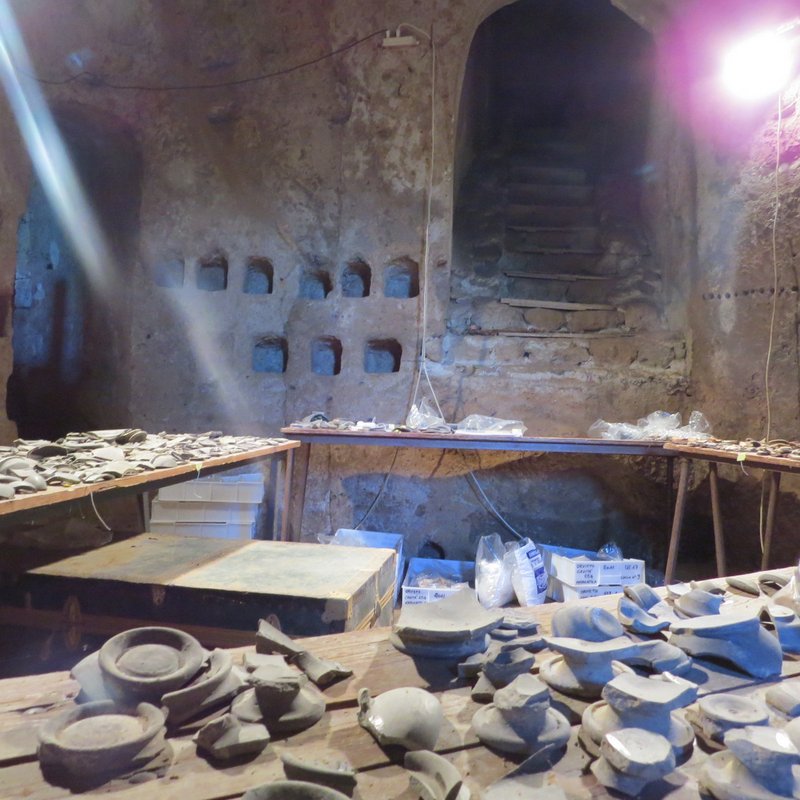 _______________________________________
_______________________________________
Orvieto has long been known for its scenic medieval architecture. Located in southwestern Umbria, Italy, it is situated on the summit of a large butte of volcanic tuff, commanding a view of the surrounding countryside, and surrounded by defensive walls built of the same volcanic tuff. Beneath it and in the surrounding areas of the medieval town, however, lie ancient Etruscan and Roman remains, a focus of archaeological investigations and excavations by various teams for decades. George’s excavations have centered on four different sites in the area, two (Coriglia and the Orvieto underground structures) of which will be further excavated in 2015. The Coriglia excavations have resulted in a wealth of finds, including monumental structures such as Etruscan and Roman walls, Etruscan and imported Greek ceramic materials, three large basins dated to the Roman Imperial period, and apsidal structures with associated features related to the management of water for baths or other purposes. “We have uncovered evidence for occupation of the site dating from the 10th century BCE all the way to the 16th century CE, as well as random realia from World War II,” write George, et al.**
________________________________
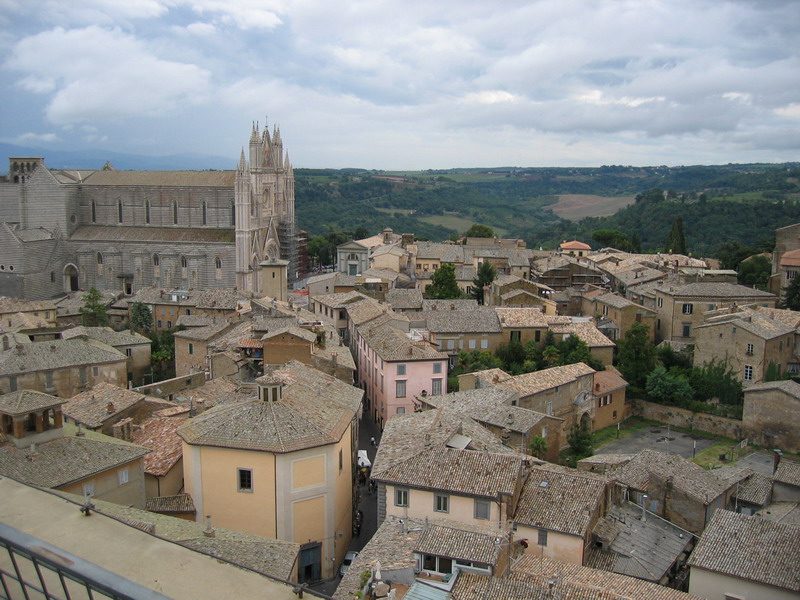 View of Orvieto. RDesai, Wikimedia Commons
View of Orvieto. RDesai, Wikimedia Commons
_______________________________
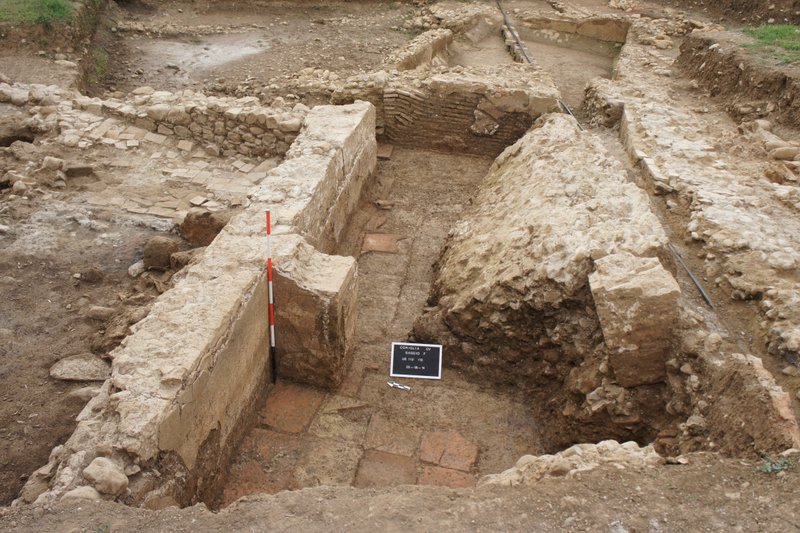 At Coriglia: Trench F showing a viscera with hydraulic cement and flooring with a collapsed vault to the right (Likely 2nd century CE). On the left a medieval industrial reuse of the structure. Courtesy David B. George
At Coriglia: Trench F showing a viscera with hydraulic cement and flooring with a collapsed vault to the right (Likely 2nd century CE). On the left a medieval industrial reuse of the structure. Courtesy David B. George
________________________________________
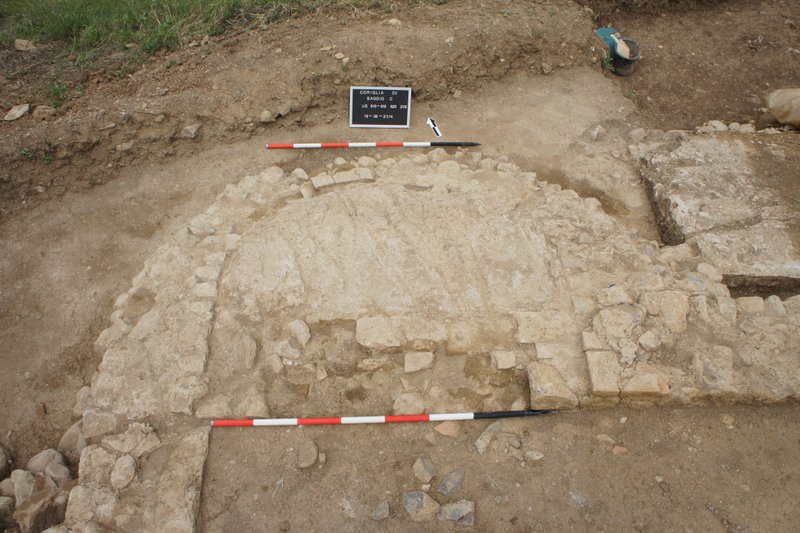 ‘Trench C’ showing the recently discovered caldarium of a Roman bath (Imperial period) at Coriglia. Courtesy David B. George
‘Trench C’ showing the recently discovered caldarium of a Roman bath (Imperial period) at Coriglia. Courtesy David B. George
_______________________________________
Overall, excavations under George and Bizzarri’s direction in the area have recovered monumental structures, sculptures, mosaics, coinage, inscriptions, ceramics, frescoes, and numerous other artifacts. Looking forward, he anticipates new finds that will shed additional light and answer more questions about what the sites at Orvieto and Coriglia are all about. “We are still trying to determine how the structure was ‘killed’ [filled in and then abandoned] – in a short period of time confined over the course of a few months or over a much longer period,” says George, referring to the cavitá. “The tight dating of the Attic pottery seems to indicate a short period but the enormous quantity gives one pause. At Coriglia, our current hypothesis is that it is a sanctuary. We wish to test this by excavating in areas that should yield architectural and ceramic evidence that would be associated with such use. We are still working on the phasing of our walls and getting a handle on three periods of expansion, at least one of which followed a mudslide.”
Even more important, however, may be what their findings will ultimately say about the lives of people in the region so long ago. Write George, Bizzarri and colleagues, “based on what is known from similar sites in the region, the members of our archaeological expedition may be confident that they will make discoveries that will reflect daily life in the Etruscan and Roman periods.”*
More detailed information about the sites and excavation project can be obtained at the project website and here. The latter link includes information about how to apply, for those interested in participating in the excavations.
_______________________________________________
*http://www.archaeological.org/sites/default/files/brochure2015_1.pdf
Just released!
The special new premium quality print edition of Popular Archaeology Magazine. A beautiful volume for the coffee table.
Travel and learn with Far Horizons.
Read about the most fascinating discoveries with a premium subscription to Popular Archaeology Magazine. Find out what Popular Archaeology Magazine is all about. AND MORE:
On the go? Get the smartphone version of Popular Archaeology as an app or as an ebook.
Popular Archaeology’s annual Discovery Edition eBook is a selection of the best stories published in Popular Archaeology Magazine in past issues, with an emphasis on some of the most significant, groundbreaking, or fascinating discoveries in the fields of archaeology and paleoanthropology and related fields. At least some of the articles have been updated or revised specifically for the Discovery edition. We can confidently say that there is no other single issue of an archaeology-related magazine, paper print or online, that contains as much major feature article content as this one. The latest issue, volume 2, has just been released. Go to the Discovery edition page for more information.

